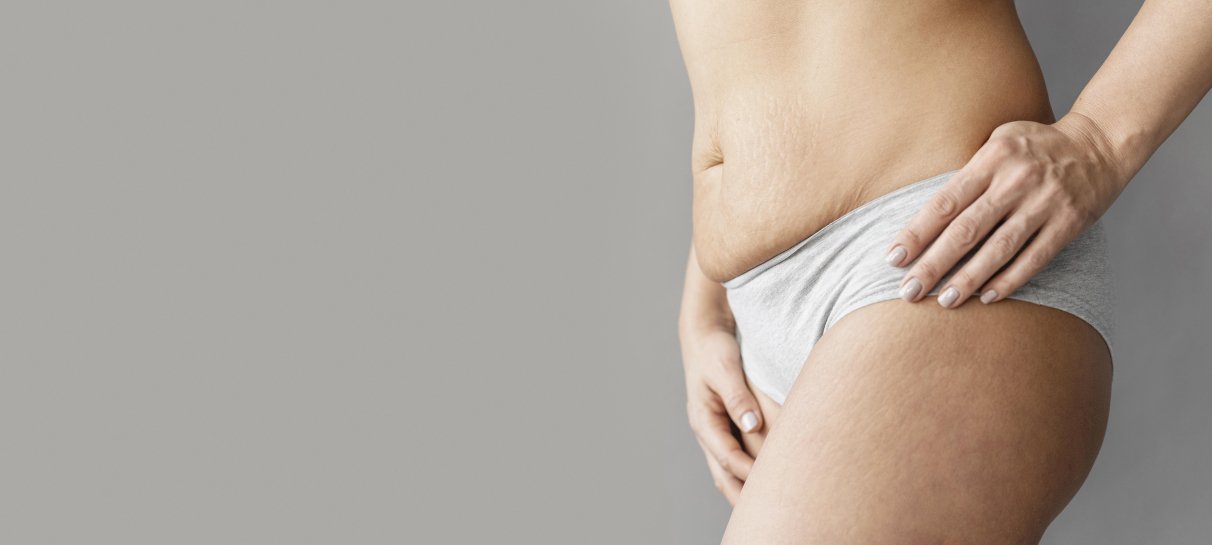mai
07,
2025
Discover natural alternatives to mesotherapy for radiant skin: essential oils, nutrition, holistic practices, and personalized care.
The cosmetics and aesthetics expert, for professionals and individuals

You know, those fine lines that sometimes appear on the skin? Stretch marks affect nearly 80% of adults, according to a review. British Journal of Dermatology [1]. Far from being purely an aesthetic issue, they tell the story of our body: pregnancy, growth, weight variations... But good news: there are solutions to prevent them and reduce their appearance. Let's explore together the mechanisms behind these marks and examine scientifically validated methods to address them.
Stretch marks form when the dermis - the middle layer of the skin - undergoes rapid stretching. Imagine an elastic band being pulled too quickly: it loses its elasticity. This is what happens to collagen and elastin fibers when the skin is subjected to sudden changes (weight gain, growth during adolescence, pregnancy) or hormonal fluctuations (such as during puberty). [1].
Their evolution is characterized by two phases:
If some people are more prone to developing stretch marks than others, it is often a matter of genetic predisposition. A study by the INSERM highlights that variations in the genes responsible for collagen production play a major role. [1]. Hormones, especially cortisol (secreted in times of stress or during pregnancy), also weaken the skin fibers. [4].
Well-hydrated skin is more elastic and better able to resist stretching. Dermatologists recommend applying daily. vegetable oils (sweet almond, jojoba) or some creams containing hyaluronic acid [1]. A clinical study has shown that regular hydration reduces the risk of stretch marks during pregnancy by 30%.
Key nutrients for supple skin:
These elements help maintain the elasticity of the dermis. [1].
Regular exercise improves blood circulation, which oxygenates the skin and makes it more resilient. Gentle practices like yoga or swimming stretch the muscles without causing micro-tears. [1] [7].
For the recent stretch marks (red), hyaluronic acid in cream or serum shows promising effectiveness. It stimulates fibroblasts, the cells that produce collagen and elastin. [4].
The white stretch marks, Older skins are less responsive to creams. However, circular massages with oils rich in vitamin E (such as wheat germ oil) can improve their texture. [7].
If aloe vera or shea butter are popular, their effectiveness remains limited according to a 2020 meta-analysis. They mainly act by moisturizing the skin surface, without penetrating deeply. [1].
Stretch marks do not define your story, but understanding their mechanisms helps to better manage them. Prevention is based on three pillars: skin hydration, balanced diet, and weight management. To reduce them, treatments using hyaluronic acid - whether applied topically or injected - provide results validated by science. [4].
And if you are unsure about the most suitable method for your skin, don't forget: a dermatologist can guide you towards a personalized solution. Because every skin deserves care... and a beautiful story to tell.
Comments : 0